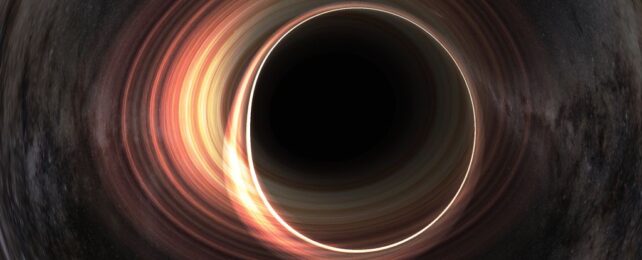
Using quantum computers, a team of researchers led by Chinese scientists has been able to stimulate the physics of black holes. They said that the test represented an effort to build systems with characteristics “similar to black holes.” They also put a Stephen Hawking-developed theory to the test.
This month, the results were reported in the peer-reviewed journal Nature Communications. Hawking’s theory of “Hawking radiation” served as the foundation for this investigation, which was conducted by researchers from the Chinese Academy of Sciences, Tianjin University, Beijing Academy of Quantum Information Sciences, and the RIKEN Cluster for Pioneering Research in Japan.
They used superconducting quantum circuits to enhance the quantum effects of black holes. According to SCMP, the study team created a “superconducting processor consisting of a chain of 10 qubits with interaction couplings controlled by nine tunable couplers” during the experiment.
The work lays the possibility for the discovery of much deeper black hole mysteries
“The results show that there is always a certain probability that the quasiparticle inside the analogue black hole will radiate through the event horizon, and its radiation probability satisfies the property of Hawking radiation,” the Institute of Theoretical Physics of the Chinese Academy of Sciences said in an article on research progress.
The researchers also stated that their work lays the possibility for the discovery of much deeper black hole mysteries.
“This newly constructed analogue black hole then facilitates further investigations of other related problems of the black hole,” the team wrote.
Theoretically, the smallest particles—the fundamental constituents of matter—spontaneously form across the ‘not-so-empty’ universe, according to the British theoretical physicist. When these virtual particle pairs are generated, they immediately annihilate one another and the universe continues operating as usual (for every electron created, a positron will be created at the same moment and in the same place).
Hawking proposed that when a particle and anti-particle (the pair, as we previously referred to it) form close to a black hole’s event horizon, one is drawn in while the other is not, preventing their annihilation. One-half of every pair is separated, allowing genuine radiation known as “Hawking radiation” to escape.
The majority of black holes are created when stars die
The majority of black holes are created when stars die. While a sizable portion of stars expand to become red giants, they then contract to change into white dwarfs. However, those far more massive (10 to 20 times that of the star in our solar system) develop into stellar-mass black holes or super-dense neutron stars.
Four years ago, researchers saw for the first time the rare image of a black hole at the heart of galaxy M87, 53 million light-years away from Earth.
In April, scientists were able to make significant improvements to the cosmic image using artificial intelligence (AI). 2019’s Event Horizons Telescope (EHT) image showed a hazy, flaming, doughnut-shaped object with a reddish-orange color.
The revised image produced by AI retains the black hole’s shape while having a lot higher resolution. In other words, the black hole’s ring seems skinnier and its center is noticeably “darker.”
